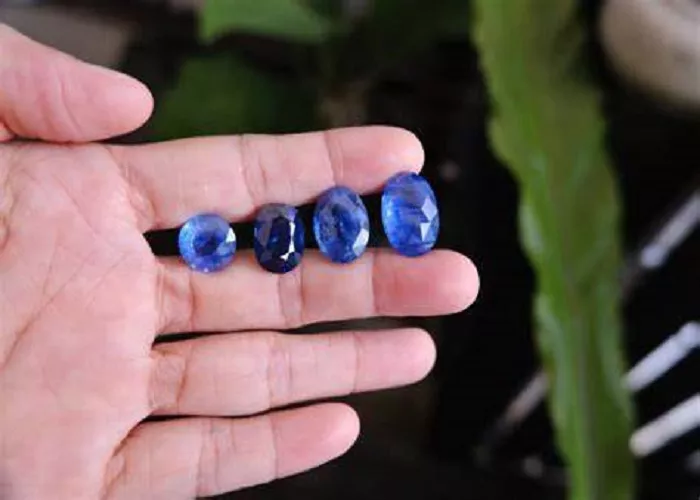Blue sapphire is one of the most precious gemstones in the world. Among all blue sapphires, the Royal Blue variety stands out for its deep, vivid color and exceptional beauty. Royal Blue sapphires are rare, highly valuable, and often associated with royalty and luxury.
In this guide, we will explore everything about Royal Blue sapphire, including what makes it special, how it is graded, where it comes from, how to choose the best quality, its uses in jewelry, and how to care for it.
Whether you are a gemstone collector, a jewelry lover, or someone looking to buy a Royal Blue sapphire, this guide will help you understand its true value.
What is Royal Blue Sapphire?
Royal Blue sapphire is a top-quality blue sapphire with a deep, intense blue color. It is not too dark or too light—it has a perfect balance of saturation and brightness.
Key Features of Royal Blue Sapphire:
The color is a rich, vivid blue with slight violet undertones. The clarity is usually eye-clean, meaning there are no visible inclusions. The cut is well-proportioned to enhance brilliance. The finest Royal Blue sapphires mostly come from Burma (Myanmar), Sri Lanka, and Madagascar.
Royal Blue is one of the most sought-after sapphire colors, often compared to Cornflower Blue, which is lighter, and Peacock Blue, which is more vibrant.
How is Royal Blue Sapphire Graded?
Gemologists evaluate sapphires based on color, clarity, cut, and carat weight, commonly known as the four Cs.
Color Grading
The most important factor in a Royal Blue sapphire is its color. It must have a pure blue hue with no green or gray tones. The saturation should be strong and vivid, not too pale or too dark. The tone should be medium to medium-dark, avoiding a blackish appearance.
The grading scale for blue sapphires ranges from light blue, which has low value, to medium blue, which is common, to intense blue, which is high quality, to vivid blue, which is top grade, and finally to Royal Blue, which is the rarest and most expensive.
Clarity
Eye-clean sapphires with no visible flaws are the best. Minor inclusions are acceptable if they don’t affect brilliance. Milky or heavily included sapphires are less valuable.
Cut
A good cut maximizes brightness, which is the reflection of light, color consistency, meaning even color distribution, and shape. Popular shapes include oval, cushion, round, and emerald cuts.
Carat Weight
Royal Blue sapphires above five carats are extremely rare. Prices increase significantly for stones over two carats.
Where Does Royal Blue Sapphire Come From?
The origin of a sapphire affects its value. The best Royal Blue sapphires come from a few key locations.
Burma (Myanmar)
Burmese sapphires are known for the richest, velvety blue color. They are rare and highly prized in auctions, making them the most expensive origin for sapphires.
Sri Lanka (Ceylon)
Sri Lankan sapphires are famous for their bright, slightly lighter Royal Blue color. They often have better clarity than Burmese sapphires and are more available in the market.
Madagascar
Madagascar is a newer source but produces high-quality Royal Blue stones. They are often more affordable than Burmese sapphires.
Other Sources
Kashmir in India is rare but known for cornflower blue, not Royal Blue. Thailand, Australia, and Africa produce sapphires that are usually darker or less saturated.
How to Choose the Best Royal Blue Sapphire?
Buying a Royal Blue sapphire requires careful evaluation. Follow these tips to ensure you select a high-quality stone.
Check the Color
Look for a deep blue with slight violet undertones. Avoid stones that are too dark, appearing navy, or too light, appearing sky blue. Always view the sapphire under natural light, not just jewelry store lights, to see its true color.
Examine Clarity
Hold the stone under a light and check for visible inclusions. Prefer eye-clean sapphires with no black spots or cracks.
Verify the Cut
A well-cut sapphire should sparkle evenly. Avoid windowed stones, where light passes through without reflection, as this indicates a poor cut.
Ask for Certification
Always request a gem lab report from reputable labs like GIA, AGL, or SSEF. The certificate confirms the color, origin, and any treatments the sapphire may have undergone.
Compare Prices
Burmese Royal Blue sapphires are the most expensive. Sri Lankan and Madagascan sapphires offer better value while still maintaining high quality.
Royal Blue Sapphire in Jewelry
Royal Blue sapphires are used in high-end jewelry due to their durability, ranking 9 on the Mohs scale, and their stunning beauty.
Popular Jewelry Styles
They are often set in engagement rings as an alternative to diamonds. Earrings and pendants featuring solitaire or halo designs are also popular. Bracelets and necklaces often pair Royal Blue sapphires with diamonds for added brilliance.
Famous Royal Blue Sapphire Jewelry
One of the most famous pieces is Princess Diana’s engagement ring, now worn by Kate Middleton. Elizabeth Taylor also owned a stunning sapphire necklace that showcased the gem’s beauty.
How to Care for Royal Blue Sapphire?
Sapphires are durable but still need proper care to maintain their beauty.
Clean them with warm soapy water and a soft brush. Avoid harsh chemicals like bleach and chlorine, which can damage the stone. Store sapphires separately to prevent scratches from other jewelry.
Conclusion
Royal Blue sapphire is a timeless, luxurious gemstone with unmatched beauty. Its deep blue color, rarity, and durability make it a favorite among collectors and jewelry lovers.
When buying a Royal Blue sapphire, always check the color, clarity, and cut. Verify the origin and certification, and compare prices from trusted sellers.
Whether set in a ring, necklace, or earrings, a Royal Blue sapphire is a symbol of elegance and sophistication.
Would you like help finding a Royal Blue sapphire? Contact a trusted jeweler or gemologist for expert advice!
Related Topics:
- The Value of Ceylon Royal Blue Sapphires: A Complete Guide
- Why Is Fancy Blue Sapphire the Gem of Choice for Royals?
- What’s the CZ Sapphire Necklace?


